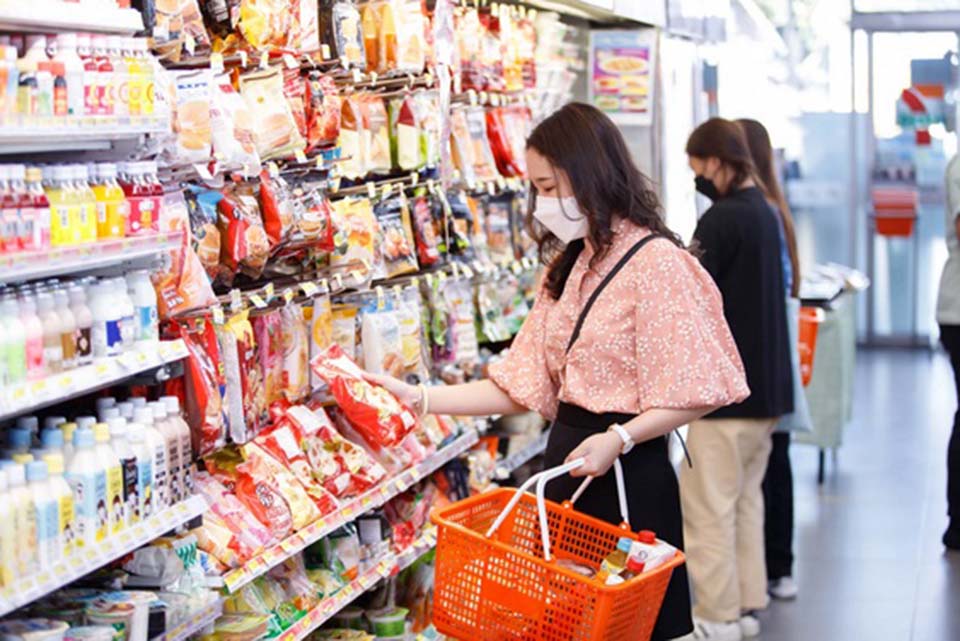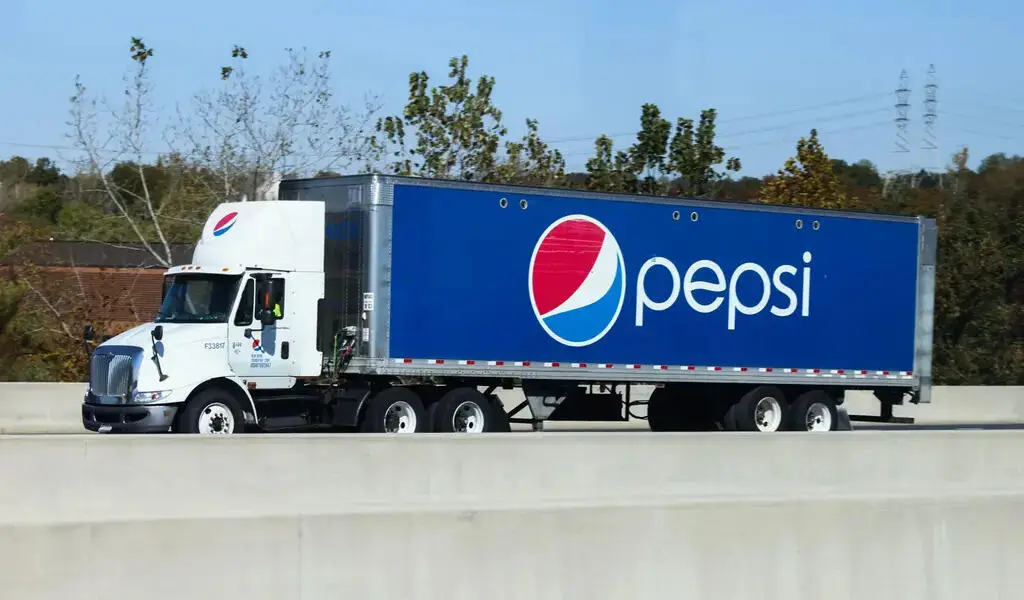Business
Thailand’s 14.9 Trillion Baht Household Debt is a Ticking Time Bomb

Household debt has become an alarming issue in Thailand, and as the country prepares for a general election this year, it is a ticking time bomb that requires the immediate attention of political parties making policy promises to voters.
In the third quarter of last year, household debt had risen to 14.9 trillion baht, equal to 87 percent of GDP (GDP). “The Bank for International Settlements (BIS) warns that a household debt-to-GDP ratio of 80 percent is cause for concern as an international benchmark,” Suwannee Jatsadasak, assistant governor of the Bank of Thailand told ThaiPBS.
Significant Increase in Household Debt
Thailand’s household debt has risen dramatically in the last decade, rising from 59.3 percent of GDP in 2010 to 86.9 percent in the third quarter of last year.
She claims that two-thirds of the debt is related to consumption and only one-third is related to housing loans, a pattern that contrasts with that of advanced economies such as Japan and Hong Kong.
Slower economic growth and the aftermath of COVID-19 are cited as possible explanations for the persistently high household debt.
Opposition parties have long blamed low economic growth on Gen.Prayut Chan-o-cha, who took power following the 2014 military coup.

Pheu Thai’s audacious plans
In the run-up to the general election, the main opposition Pheu Thai Party is campaigning on economic policies that, if elected, will increase annual economic growth to 5%. The party is promising policies that will help low-income people in order to close the wealth gap.
The party has also promised to raise the daily minimum wage to 600 baht and to set a monthly starting salary of 25,000 baht for office workers with a bachelor’s degree.
To alleviate the plight of low-income farmers, the party promises to use artificial intelligence (AI) technology to increase farm productivity. The party says it will use non-fungible tokens (NFTs), a type of digital asset, to promote Thai farm products for farm marketing. The party’s policy will prioritize raising the incomes of young adults and farmers.
Facts about household debt that are concerning According to Suwannee, a BOT study discovered eight key facts about Thailand’s household debt.
Debtors begin borrowing money when they are very young. According to the study, 58 percent of the working population aged 25 to 29 years begin to accumulate significant debt. One-quarter of the total become non-performing loans. Credit card, personal loan, car hire-purchase, and motorcycles are among their debts. Some of them use their vehicles to make a living, while others add to their mounting bad debt. The study found that the debt of people under the age of 25, including high school and college students, who borrow money, has been increasing.
Debtors borrow amounts that are greater than their ability to repay and from multiple lenders. It is estimated that 30% of credit card and personal loans have four creditors on average. On average, the debt is 10-25 times the monthly individual income. It is significantly higher than the international benchmark practice of limiting debt to 5-12 times monthly income.
According to the report, in Thailand, monthly debt payments account for more than half of the borrower’s monthly income, and credit card and personal loans account for more than half of the individual’s total debt.
Credit cards and personal loans, which have high interest rates, are at the heart of the debt problem. These loans lack collateral and are typically short-term debt, resulting in a large monthly installment payment.
Because of the high interest rate, many people are unable to repay their debt, and approximately 60% of these accounts default on their debt obligations.

The loan snare
Debtors do not have sufficient or accurate information about loans. Financial institutions are to blame for failing to clearly explain loan conditions such as fees, loan default fees, and so on. Some debtors are enticed by low interest rates but end up with a long-term loan, trapping them in a debt cycle.
Because 62 percent of Thai families do not have adequate savings for emergency spending, many are forced to borrow money. More than half of Thai households would be unable to repay debts if their own income fell by 20%, forcing them to borrow from financial institutions or loan sharks to make ends meet. Because of their reliance on uncertain income streams, the majority of them are unable to service debt. According to the study, such groups include farmers, freelancers, self-employed people, street vendors, people who do odd jobs, people who provide services, and factory workers.

Being trapped in a debt cycle
Many debtors have been trapped in a debt cycle for a long time. According to the BOT study, about a quarter of people over the age of 60 still have debts to repay, averaging 415,000 baht per person. The majority of them are farmers or have credit card debt. Others who took out low-interest personal loans have a longer repayment period, such as three percent interest and seven years.
Personal loans and farm loans account for the majority of bad debts. Approximately 10 million loan accounts have become delinquent. During the pandemic, 4.5 million accounts defaulted, representing 3.1 million people, with a total debt of 400 billion baht.
Defaulting accounts in state-owned Specialized Financial Institutions (SFIs) account for 70%, non-banks 20%, and commercial banks 10%. Personal loans and farm loans account for the vast majority of bad debts.
Reliance on loan sharks
There is no visible end to the debt cycle, and roughly one-third of debtors who were sued by creditors still owe money after foreclosure. The proceeds from the forced sale of their assets are insufficient to cover the debt. One issue is that debtors cannot access debt restructuring with creditors before and after filing a lawsuit and receiving a court verdict.
Retail debtors who do not own a business are not eligible for bankruptcy protection. This prevents them from accessing the rehabilitation process, resulting in perpetual debt. According to the central bank, the bankruptcy law may need to be changed to accommodate these individuals.
Debt owed to underground lenders continues to pose problems for the system. Around 42 percent of the 4,600 families who sought assistance through a debt resolution scheme launched by the central bank and the Finance Ministry owed an average of 54,300 baht to underground lenders.

Why are loan sharks preferred?
They must borrow from sources other than banks, non-banks, or SFIs for three reasons: They are unable to access the financial system due to their uncertain income stream; financial institutions do not have information about their income record, so they do not lend; or they may lend but at high interest rates; borrowing from loan sharks is convenient despite the high interest rates because they do not require loan collateral. To repay their debts to financial institutions, some debtors borrow from underground lenders.
What comes next?
The BOT intends to issue new regulations requiring responsible financial lending. The BOT has also proposed changes to bankruptcy law. However, the amendment must be approved by Parliament.
The central bank’s study challenges political parties to find solutions to the dire household debt situation.

Business
PepsiCo Reduces Revenue Projections As North American Snacks And Key International Markets Underperform.

(VOR News) – In the third quarter of this year, Pepsi’s net income was $2.93 billion, which is equivalent to $2.13 per share. This was attributed to the company.
This is in stark contrast to net income of $3.09 billion, which is equivalent to $2.24 per share, during the same period in the previous year. The company’s earnings per share were $2.31 when expenses were excluded.
Net sales decreased by 0.6%, totaling $23.32 billion. Organic sales increased by 1.3% during the quarter when the effects of acquisitions, divestitures, and currency changes are excluded.
Pepsi’s beverage sales fell this quarter.
The most recent report indicates that the beverage and food sectors of the organization experienced a 2% decline in volume. Consumers of all income levels are demonstrating a change in their purchasing habits, as indicated by CEOs’ statements from the previous quarter.
Pepsi’s entire volume was adversely affected by the lackluster demand they encountered in North America. An increasing number of Americans are becoming more frugal, reducing the number of snacks they ingest, and reducing the number of times they purchase at convenience stores.
Furthermore, Laguarta observed that the increase in sales was partially attributed to the election that occurred in Mexico during the month of June.
The most significant decrease in volume was experienced by Quaker Foods North America, which was 13%. In December, the company announced its initial recall in response to a potential salmonella infection.
Due to the probability of an illness, the recall was extended in January. Pepsi officially closed a plant that was implicated in the recalls in June, despite the fact that manufacturing had already been halted.
Jamie Caulfield, the Chief Financial Officer of Pepsi and Laguarta, has indicated that the recalls are beginning to have a lessening effect.
Frito-Lay experienced a 1.5% decline in volume in North America. The company has been striving to improve the value it offers to consumers and the accessibility of its snack line, which includes SunChips, Cheetos, and Stacy’s pita chips, in the retail establishments where it is sold.
Despite the fact that the category as a whole has slowed down in comparison to the results of previous years, the level of activity within the division is progressively increasing.
Pepsi executives issued a statement in which they stated that “Salty and savory snacks have underperformed year-to-date after outperforming packaged food categories in previous years.”
Pepsi will spend more on Doritos and Tostitos in the fall and winter before football season.
The company is currently promoting incentive packets for Tostitos and Ruffles, which contain twenty percent more chips than the standard package.
Pepsi is expanding its product line in order to more effectively target individuals who are health-conscious. The business announced its intention to acquire Siete Foods for a total of $1.2 billion approximately one week ago. The restaurant serves Mexican-American cuisine, which is typically modified to meet the dietary needs of a diverse clientele.
The beverage segment of Pepsi in North America experienced a three percent decrease in volume. Despite the fact that the demand for energy drinks, such as Pepsi’s Rockstar, has decreased as a result of consumers visiting convenience stores, the sales of well-known brands such as Gatorade and Pepsi have seen an increase throughout the quarter.
Laguarta expressed his opinion to the analysts during the company’s conference call, asserting, “I am of the opinion that it is a component of the economic cycle that we are currently experiencing, and that it will reverse itself in the future, once consumers feel better.”
Additionally, it has been noted that the food and beverage markets of South Asia, the Middle East, Latin America, and Africa have experienced a decline in sales volume. The company cut its forecast for organic revenue for the entire year on Tuesday due to the business’s second consecutive quarter of lower-than-anticipated sales.
The company’s performance during the quarter was adversely affected by the Quaker Foods North America recalls, the decrease in demand in the United States, and the interruptions that occurred in specific international markets, as per the statements made by Chief Executive Officer Ramon Laguarta.
Pepsi has revised its forecast for organic sales in 2024, shifting from a 4% growth rate to a low single-digit growth rate. The company reiterated its expectation that the core constant currency profitability per share will increase by a minimum of 8% in comparison to the previous year.
The company’s shares declined by less than one percent during premarket trading. The following discrepancies between the company’s report and the projections of Wall Street were identified by LSEG in a survey of analysts:
SOURCE: CNBC
SEE ALSO:
Old National Bank And Infosys Broaden Their Strategic Partnership.
Business
Old National Bank And Infosys Broaden Their Strategic Partnership.

(VOR News) – Old National Bank, a commercial bank with its headquarters in the Midwest, and Infosys, a firm that specializes in information technology, have recently entered into a strategic expansion of their link, which has been in place for the past four years.
This expansion is more likely to take place sooner rather than later, with the likelihood being higher.
For the purpose of making it possible for Old National Bank to make use of the services, solutions, and platforms that are offered by Infosys, the objective of this expansion is to make it possible for the bank to transform its operations and processes through the application of automation and GenAI, as well as to change significant business areas.
This lets the bank leverage Infosys’ services, solutions, and platforms.
Old National Bank Chairman and CEO Jim Ryan said, “At Old National, we are committed to creating exceptional experiences for both our customers and our fellow employees.”
This statement is applicable to Old National Bank. Infosys is carefully managing the business process innovations that it is putting us through, putting a strong emphasis on efficiency and value growth throughout the process to ensure that it is carried out efficiently.
This is a routine occurrence throughout the entire operation. Because of Infosys’ dedication to our development and success, we are incredibly appreciative of the assistance they have provided.
Old National has been receiving assistance from Infosys in the process of updating its digital environment since the year 2020, according to the aforementioned company.
Ever since that time, the company has been providing assistance. The provision of this assistance has been accomplished through the utilization of a model that is not only powerful but also capable of functioning on its own power.
Infosys currently ranks Old National thirty-first out of the top thirty US banks.
This ranking is based on the fact that Old National is the nation’s largest banking corporation.
It is estimated that the total value of the company’s assets is approximately fifty-three billion dollars, while the assets that are currently being managed by the organization are valued at thirty billion dollars.
Dennis Gada, the Executive Vice President and Global Head of Banking and Financial Services, stated that “Old National Bank and Infosys possess a robust cultural and strategic alignment in the development, management, and enhancement of enterprise-scale solutions to transform the bank’s operations and facilitate growth.”
This remark referenced the exceptional cultural and strategic synergy between the two organizations. Dennis Gada is the one who asserted this claim. This was articulated explicitly concerning the exceptional cultural congruence and strategy alignment of the two organizations.
We are pleased to announce that the implementation of Infosys Topaz will substantially expedite the transformation of Old National Bank’s business processes and customer service protocols. We are exceedingly enthusiastic about this matter. We are quite thrilled about this specific component of the scenario.
Medium-sized banks operating regionally will continue to benefit from our substantial expertise in the sector, technology, and operations. This specific market segment of Infosys will persist in benefiting from our extensive experience. This phenomenon will enable this market sector to sustain substantial growth and efficiency benefits.
SOURCE: THBL
SEE ALSO:
American Water, The Largest Water Utility In US, Is Targeted By A Cyberattack
States Sue TikTok, Claiming Its Platform Is Addictive And Harms The Mental Health Of Children
Qantas Airways Apologizes After R-Rated Film Reportedly Airs On Every Screen During Flight
Business
American Water, The Largest Water Utility In US, Is Targeted By A Cyberattack

The largest regulated water and wastewater utility company in the United States stated Monday that it had been the target of a cyberattack, forcing the company to halt invoicing to consumers.
American Water, The Largest Water Utility In US, Is Targeted By A Cyberattack
American Water, based in New Jersey and serving over 14 million people in 14 states and 18 military facilities, said it learned of the unauthorized activity on Thursday and quickly took precautions, including shutting down certain systems. The business does not believe the attack had an impact on its facilities or operations and said employees were working “around the clock” to determine the origin and scale of the attack.

According to their website, American Water operates over 500 water and wastewater systems in around 1,700 communities across California, Georgia, Hawaii, Illinois, Indiana, Iowa, Kentucky, Maryland, Missouri, New Jersey, Pennsylvania, Tennessee, Virginia, and West Virginia.
SOURCE | AP
-

 News4 years ago
News4 years agoLet’s Know About Ultra High Net Worth Individual
-
Entertainment2 years ago
Mabelle Prior: The Voice of Hope, Resilience, and Diversity Inspiring Generations
-
News11 years ago
Enviromental Groups Tell Mekong Leaders Lao Dam Evaluation Process Flawed
-

 Health4 years ago
Health4 years agoHow Much Ivermectin Should You Take?
-

 Tech3 years ago
Tech3 years agoTop Forex Brokers of 2023: Reviews and Analysis for Successful Trading
-

 Lifestyles3 years ago
Lifestyles3 years agoAries Soulmate Signs
-

 Entertainment3 years ago
Entertainment3 years agoWhat Should I Do If Disney Plus Keeps Logging Me Out of TV?
-

 Health3 years ago
Health3 years agoCan I Buy Ivermectin Without A Prescription in the USA?